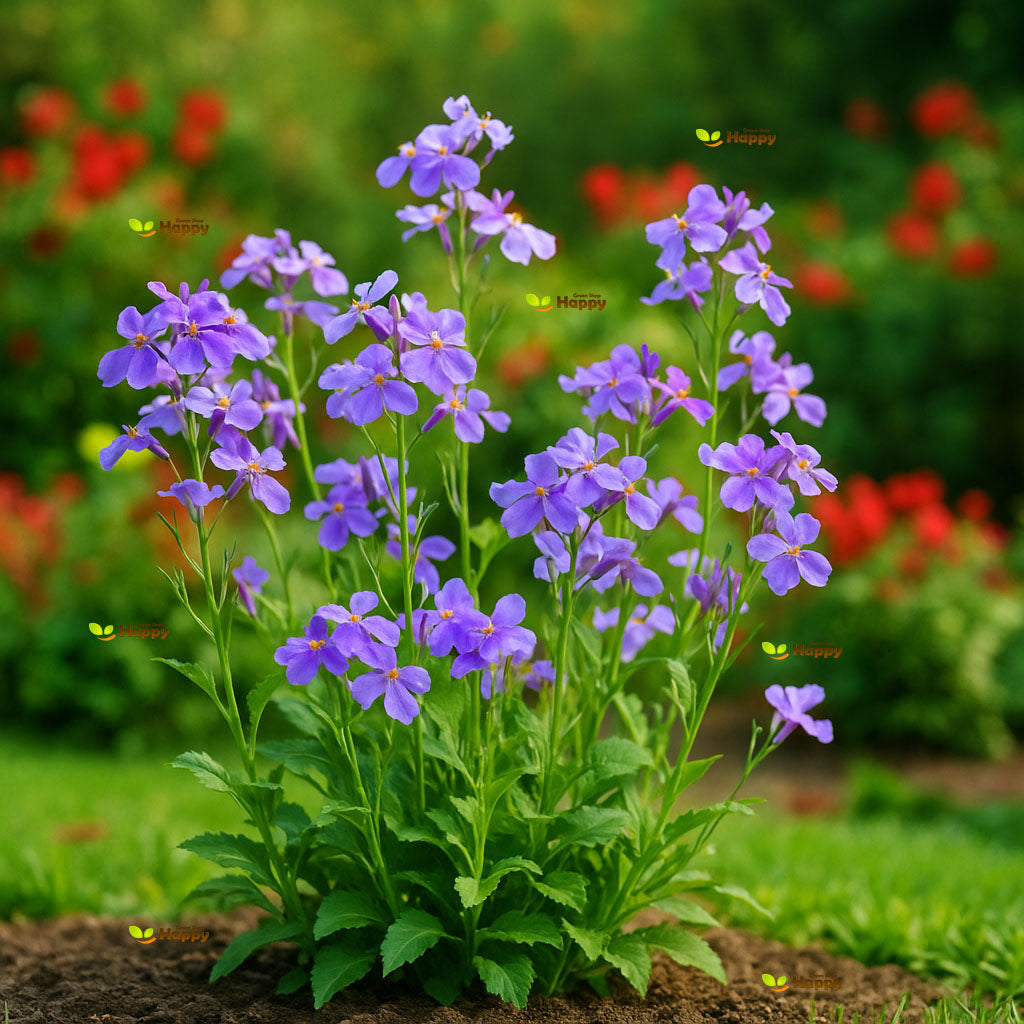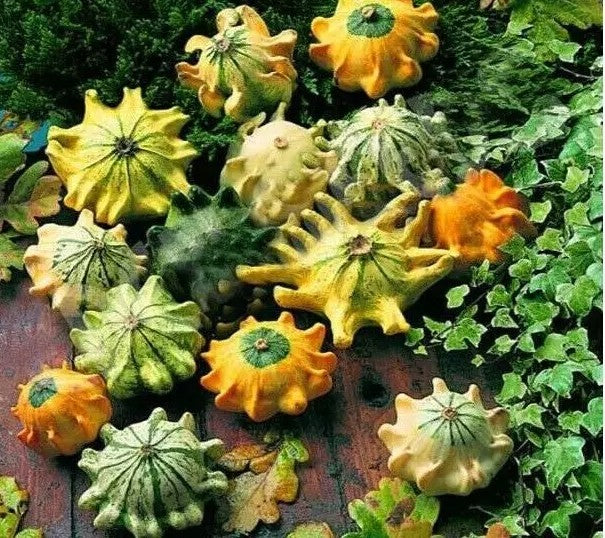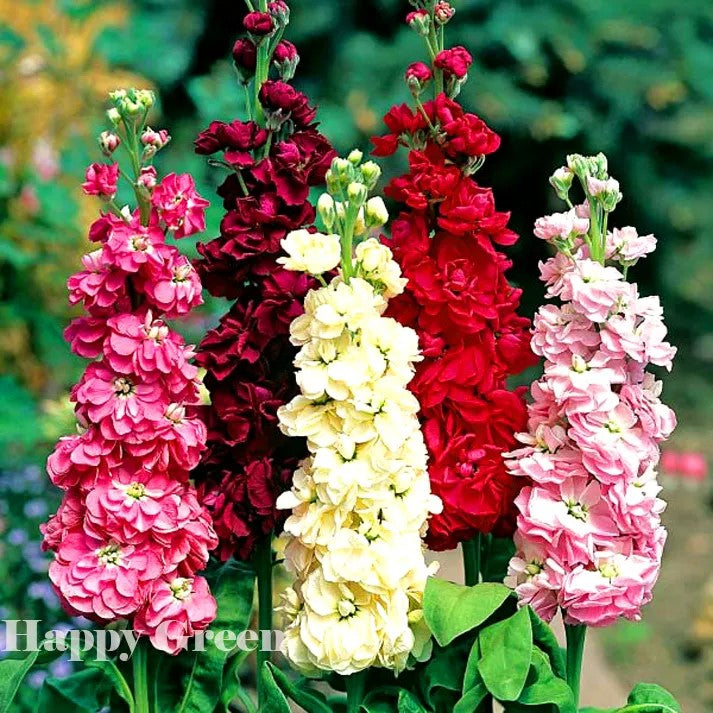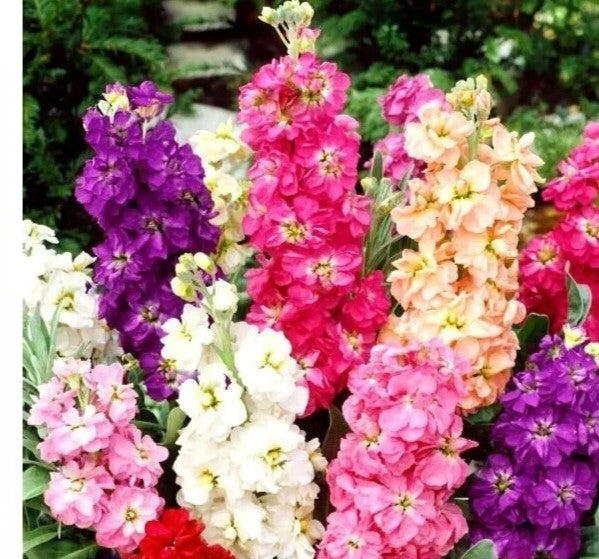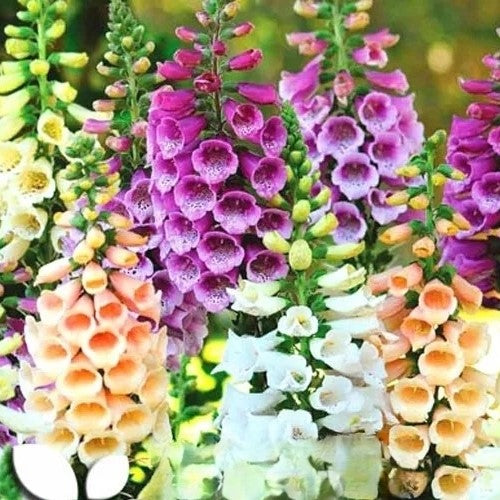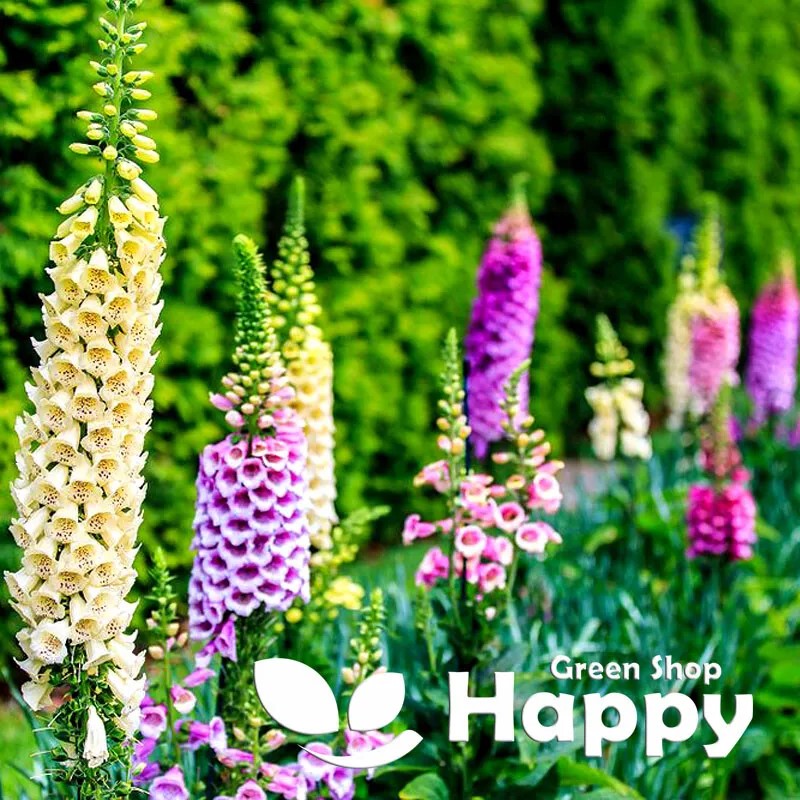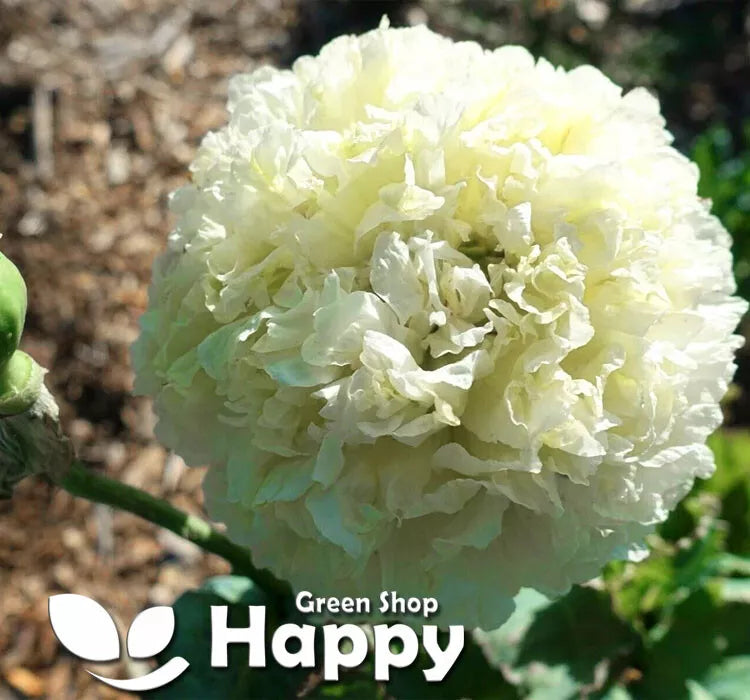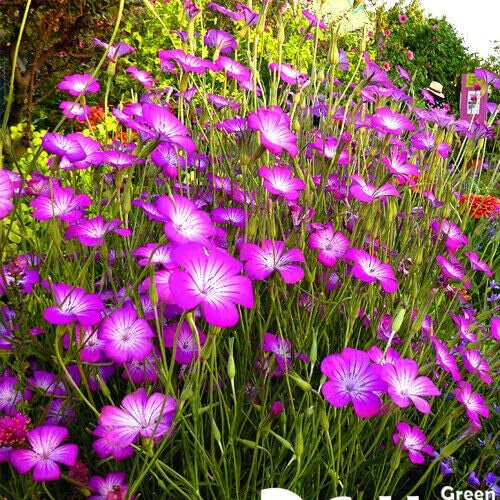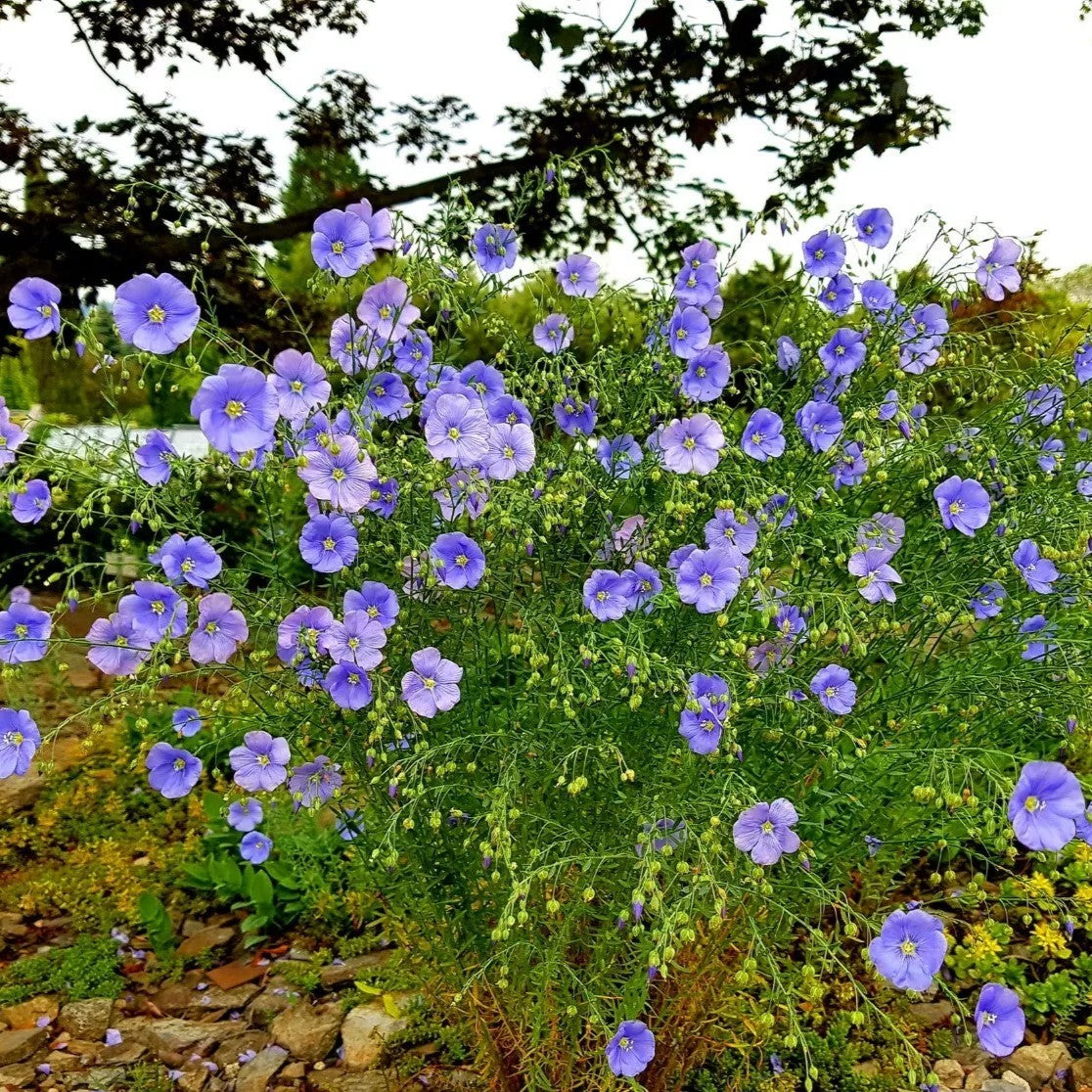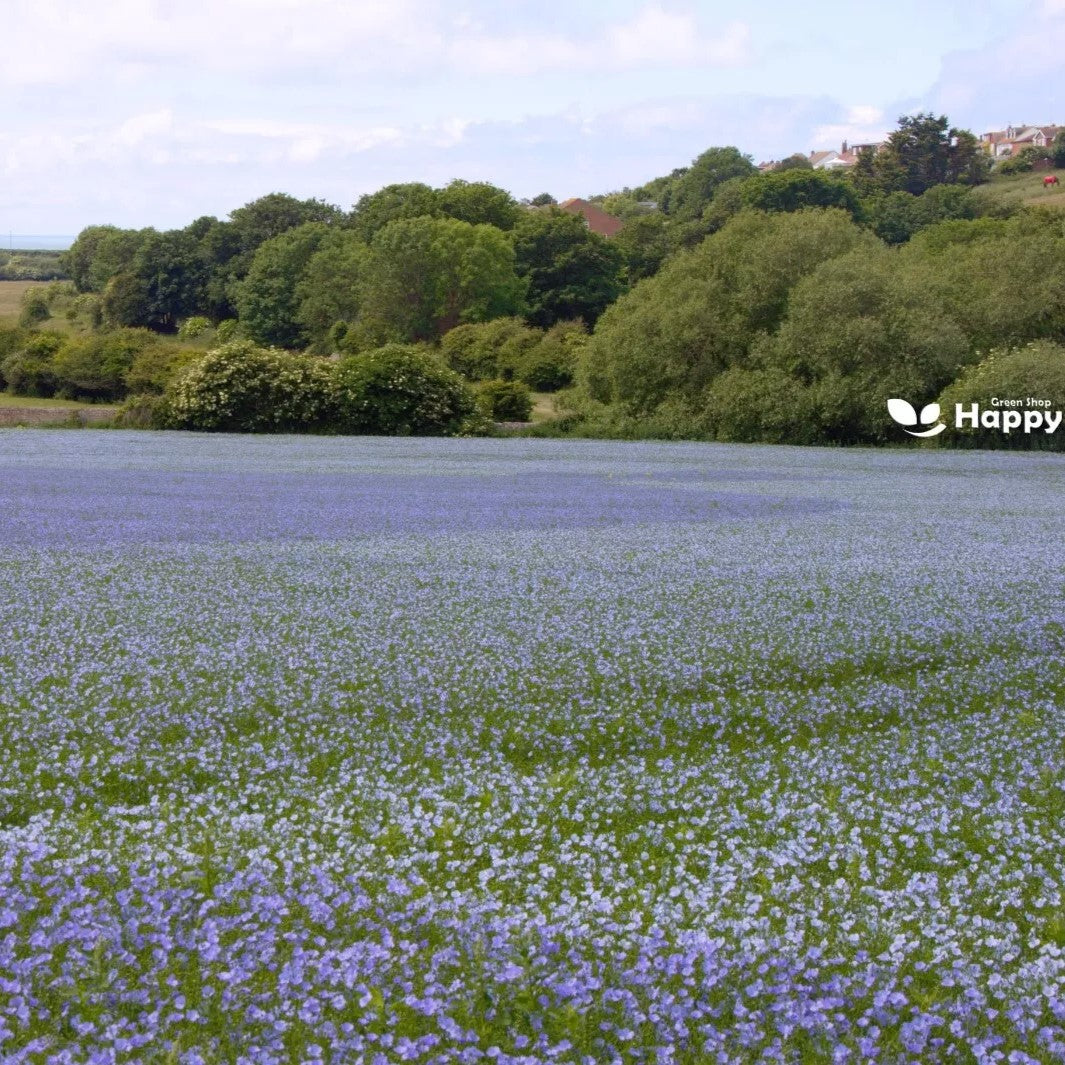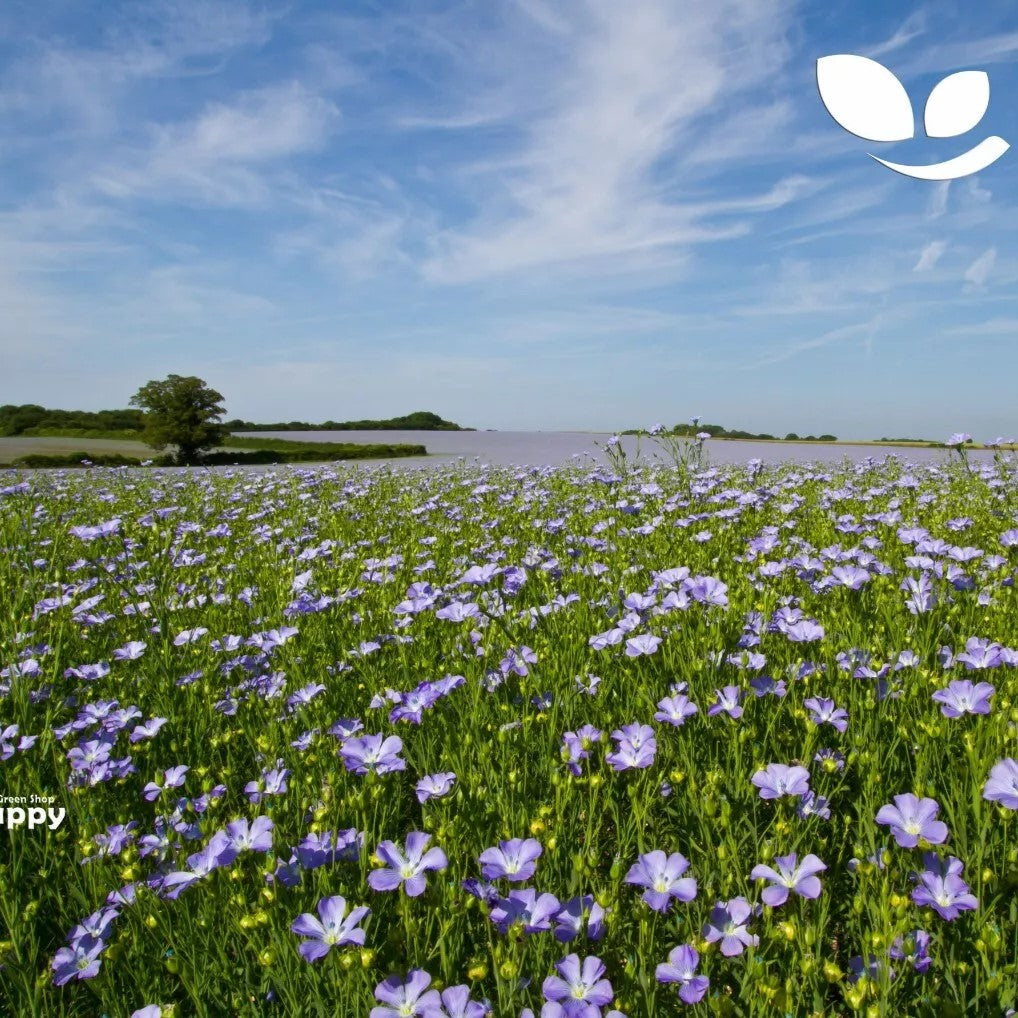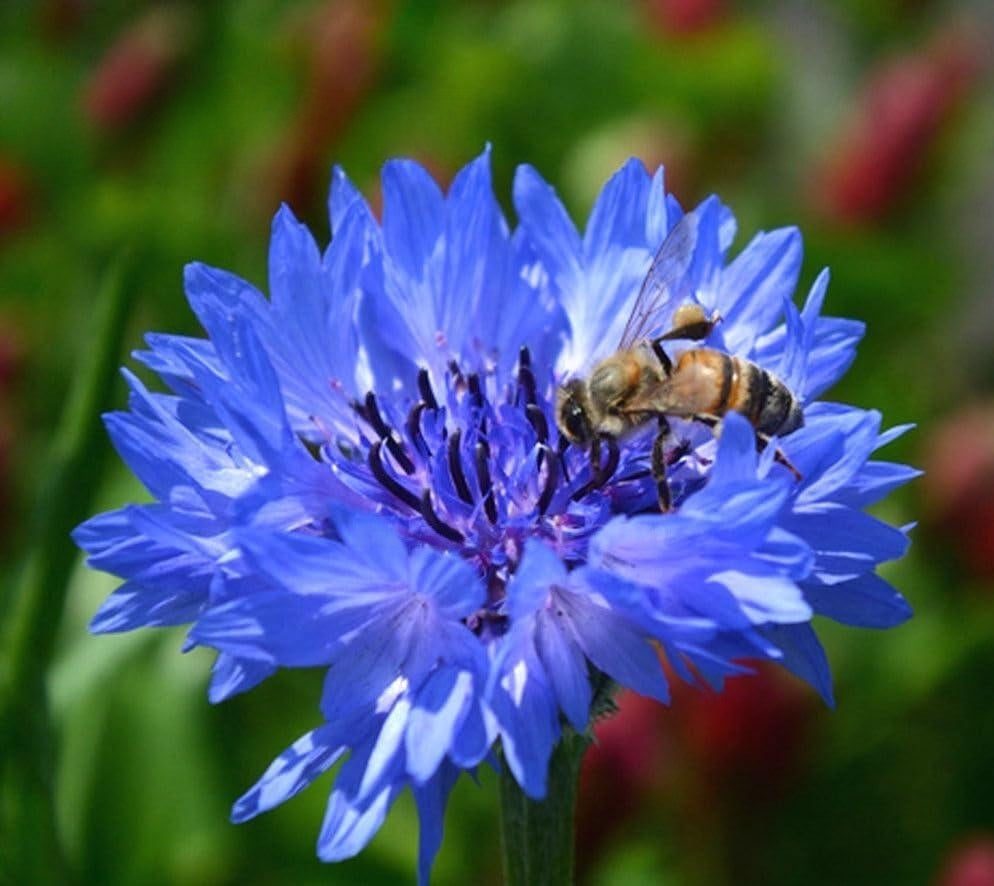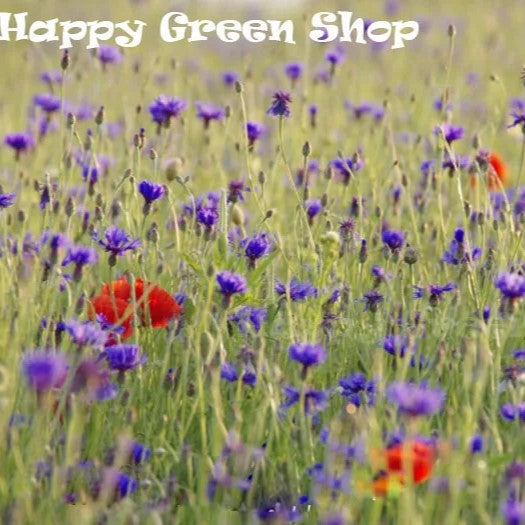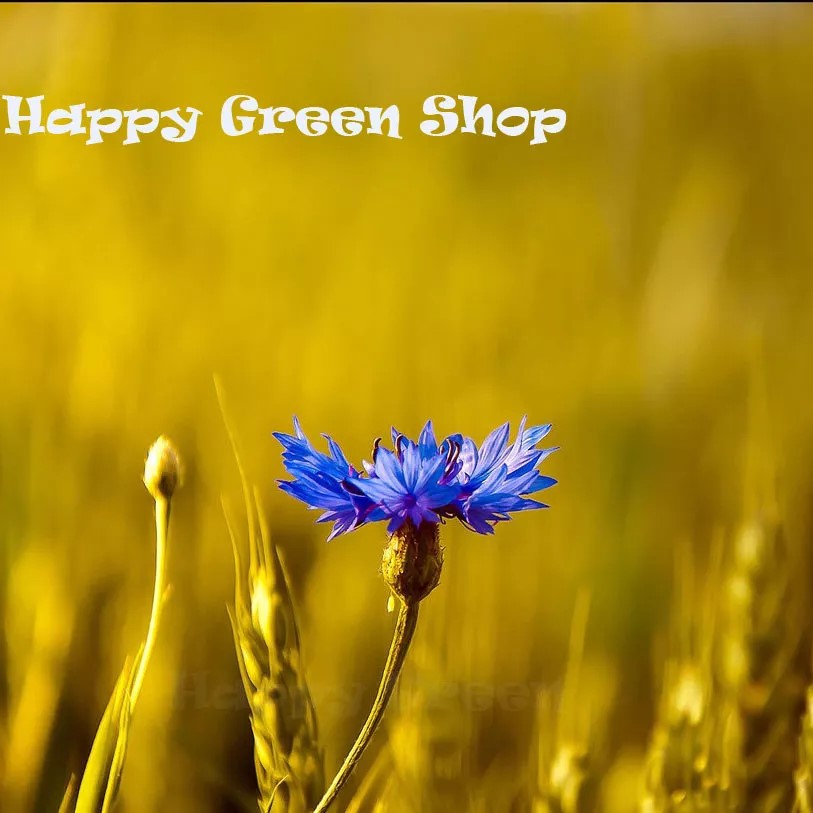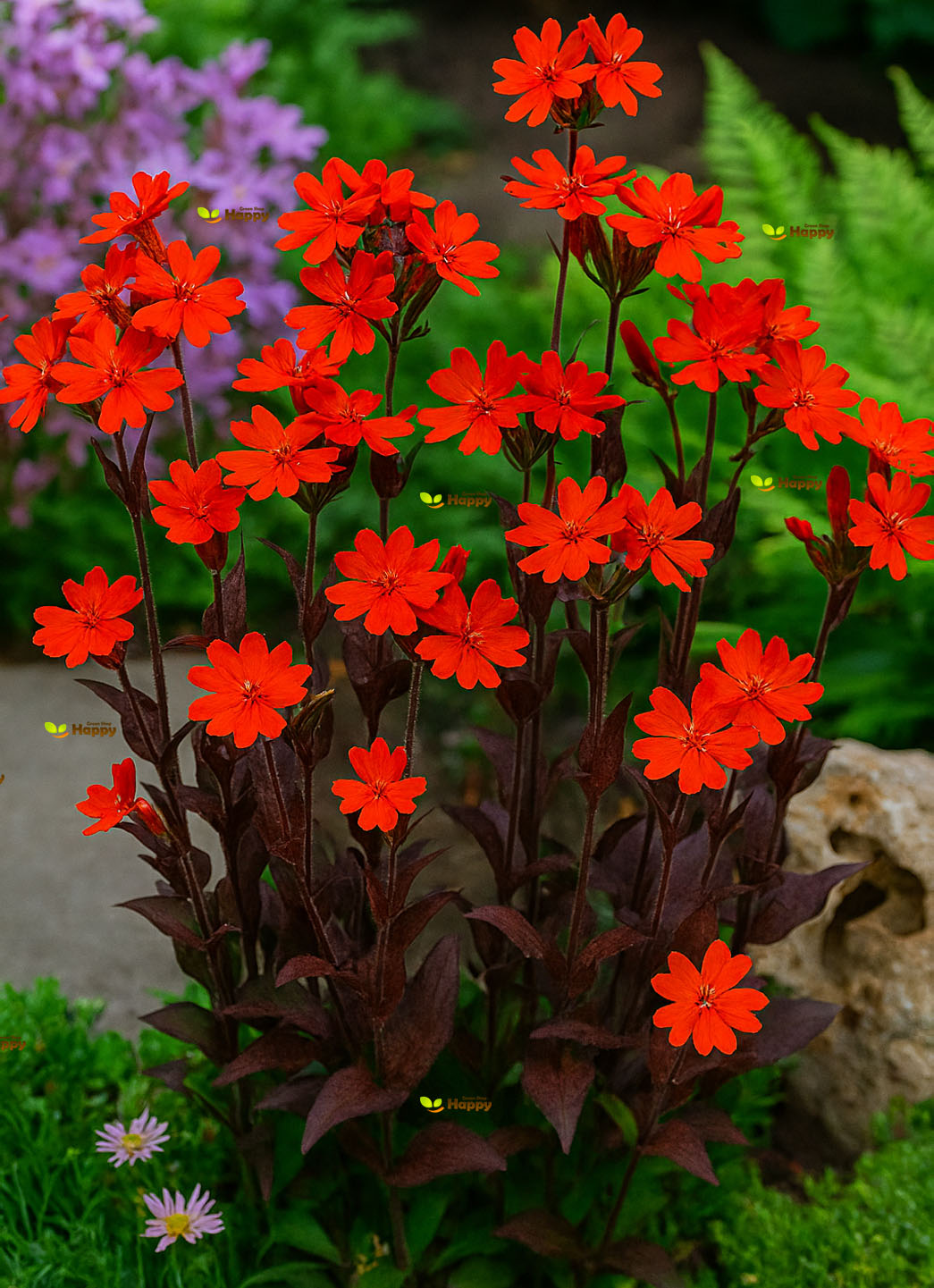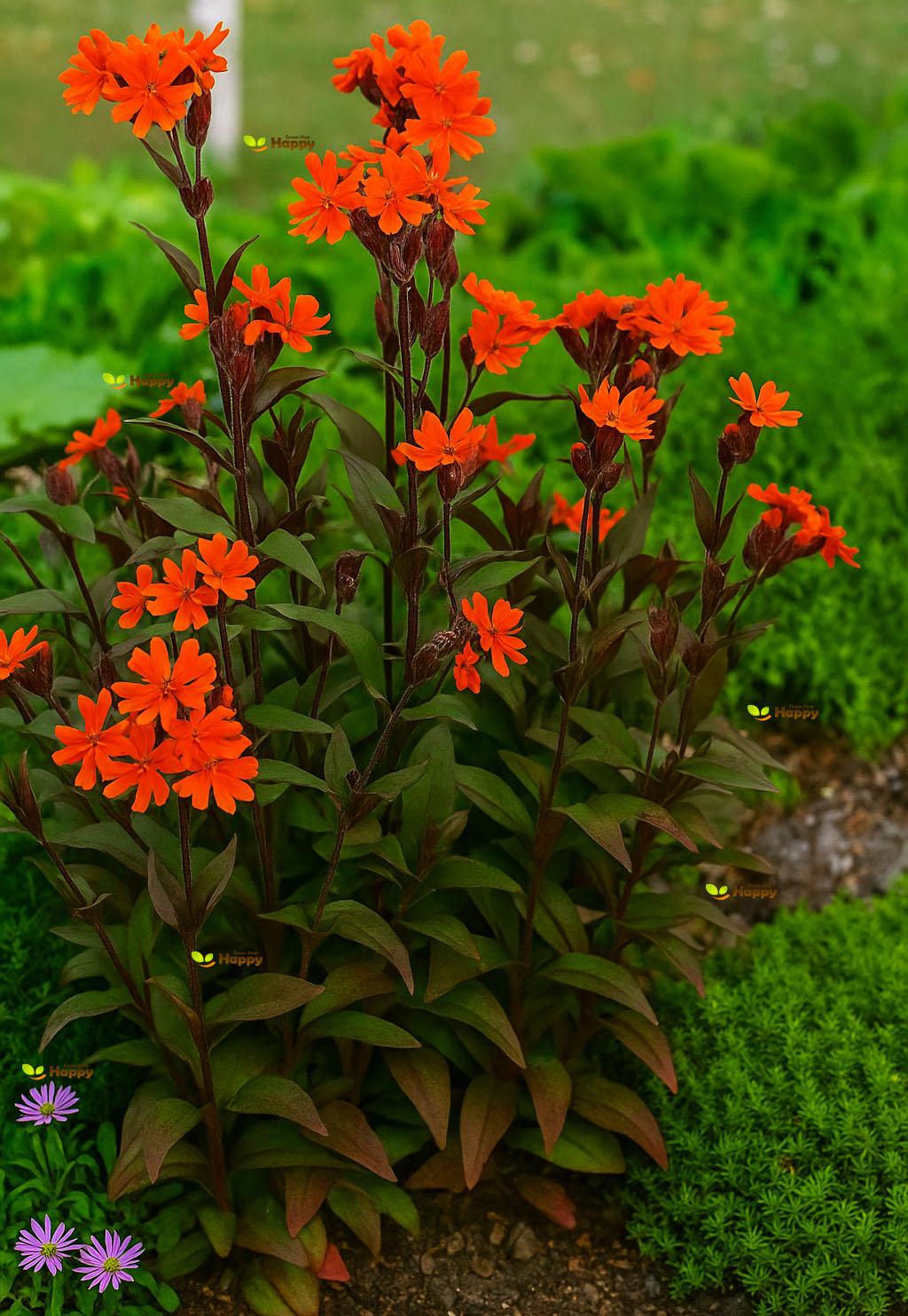Sort by:
25 products
25 products
Dwarf Stock ‘Brompton Winter’ – Seeds (Matthiola incana)
Dwarf Stock ‘Brompton Winter’ (Matthiola incana) is a charming annual producing fragrant, compact clusters of flowers in shades of pink, white, and lavender. Blooming from late autumn to early spring, it adds color and scent to borders, containers, and cottage gardens during the cooler months. Easy to grow and low-maintenance, this variety attracts pollinators and is perfect for creating a cheerful winter or early spring display.
Why Grow "Brompton Winter"
-
Fragrant, compact flower clusters in pink, white, and lavender
-
Blooming season from late autumn to early spring
-
Low-maintenance, hardy annual
-
Pollinator-friendly and ideal for winter color
Key Features
-
Type: Annual (Matthiola incana)
-
Height: 25–35 cm
-
Flowering: Late autumn to early spring
-
Position: Full sun to partial shade
-
Uses: Borders, containers, cottage gardens, pollinator-friendly planting
Ideal For
-
Adding winter and early spring color to borders and beds
-
Container and window box planting
-
Pollinator-friendly garden schemes
-
Low-maintenance fragrant displays
Sowing & Growing
-
Sow indoors: August–October in trays or pots
-
Sow outdoors: September–November directly in soil (mild climates)
-
Germination: 7–14 days at 15–20°C
-
Thin seedlings 20–25 cm apart
-
Prefers well-drained soil in full sun to partial shade
-
Water moderately until established
Dwarf Foxglove 'Foxy' Mix – 8000 Seeds (Digitalis purpurea)
Add cottage garden charm with Dwarf Foxglove 'Foxy', a compact variety that produces spires of trumpet-shaped blooms in shades of pink, purple, cream, and white. Unlike taller foxgloves, 'Foxy' grows to a manageable height, making it perfect for smaller gardens, beds, borders, and containers. Loved by bees and pollinators, it’s a classic for wildlife-friendly planting.
What Makes It Special
-
Compact foxglove, only 60–80 cm tall
-
Mix of soft, romantic colors with speckled throats
-
Blooms in the first year from seed
-
Perfect for beds, borders, and wildlife gardens
Key Features
-
Pack Size: 8000 seeds
-
Height: 60–80 cm
-
Biennial (flowers in year one if sown early)
-
Attracts bees and other pollinators
Ideal For
-
Cottage and wildlife gardens
-
Beds, borders, and mixed plantings
-
Containers and small gardens
-
Pollinator-friendly spaces
Sowing
-
Sow indoors Jan–May on moist seed compost, press seeds lightly (do not cover, needs light to germinate)
-
Germination: 14–21 days at 18–22°C
-
Transplant outdoors after frost, spacing 25–30 cm
-
Flowers: June–August
Cream Peony Poppy – Seeds
(Papaver paeoniflorum)
The Cream Peony Poppy is an elegant annual variety producing large, fully double, peony-like blooms in a soft cream shade. These striking flowers add a touch of sophistication to any garden display and make a stunning addition to borders, cottage gardens, and cut flower arrangements. Easy to grow and highly ornamental, they will bloom through summer, creating a spectacular display.
Key Features
-
Type: Hardy annual
-
Height: 80–100 cm
-
Spread: 30–40 cm
-
Flowering: June–August
-
Position: Full sun
-
Soil: Well-drained, moderately fertile
Ideal For
-
Cottage gardens and wildflower plantings
-
Cut flower arrangements
-
Adding height and drama to summer borders
-
Naturalistic planting schemes
Sowing & Growing
-
Sow outdoors: March–May or September (direct into soil)
-
Sow depth: Surface sow, lightly cover with fine soil
-
Spacing: Thin seedlings to 25–30 cm apart
-
Care: Prefers poor soil and little feeding; deadhead to prolong flowering or leave seed heads for structure
Corn Cockle – Seeds (Agrostemma githago)
Corn Cockle (Agrostemma githago) is a classic wildflower that brings simple charm to any garden. Its tall stems carry graceful, cup-shaped magenta-pink blooms that sway beautifully in the breeze. Once common in cornfields, this heritage flower is now treasured for wildflower meadows, cottage gardens, and naturalistic plantings. Easy to grow and loved by pollinators, it thrives in sunny, well-drained soil.
Why Grow "Corn Cockle"
-
Bright magenta-pink wildflower blooms
-
Tall, graceful stems for naturalistic planting
-
Heritage flower once common in fields
-
Attracts bees and pollinators
Key Features
-
Type: Hardy annual (Agrostemma githago)
-
Height: 60–90 cm
-
Flowering: June–September
-
Position: Full sun
-
Uses: Wildflower meadows, borders, cut flowers
Ideal For
-
Naturalistic and wildlife gardens
-
Wildflower meadows and cottage planting
-
Pollinator-friendly spaces
-
Tall, airy accents in borders
Sowing & Growing
-
Sow outdoors: March–May or August–September
-
Sow direct into prepared soil, lightly cover
-
Germination: 14–21 days
-
Thin seedlings to 25–30 cm apart
-
Prefers full sun and well-drained soil
COMMON FLAX SEEDS (Linum usitatissimum)
Common Flax is a graceful annual grown for both beauty and usefulness. Its slender stems are topped with delicate sky-blue flowers, creating a soft, natural look in borders, beds, and wildflower gardens. Easy to grow and low-maintenance, it also produces valuable seeds traditionally used for culinary and health purposes.
Why Grow "Common Flax"
-
Delicate sky-blue blooms with natural charm
-
Easy-to-grow, low-maintenance annual
-
Produces edible seeds
-
Ideal for borders, beds, and wildflower gardens
Key Features
-
Type: Annual (Linum usitatissimum)
-
Height: 40–60 cm
-
Flowering: Summer (June–August)
-
Position: Full sun
-
Uses: Borders, flower beds, wildflower areas, seed harvesting
Ideal For
-
Adding soft blue tones to borders and cottage gardens
-
Wildflower meadows and naturalized areas
-
Harvesting flax seeds for home use
-
Beginner-friendly gardening
Sowing & Growing
-
Sow outdoors: Directly into soil in spring after frost
-
Germination: 10–14 days
-
Thin seedlings: 10–15 cm apart
-
Prefers full sun and well-drained soil
Bachelor’s Button ‘Blue Boy’ – 1,200 Seeds (Centaurea cyanus)
Bachelor’s Button ‘Blue Boy’ (Centaurea cyanus) is a charming annual producing striking cornflower-blue blooms with a classic, dainty appearance. Perfect for borders, meadows, and cutting gardens, it adds vibrant color from late spring to summer. Easy to grow and long-flowering, it attracts pollinators while creating a nostalgic, cottage-garden feel.
Why Grow "Blue Boy"
-
Bright cornflower-blue blooms
-
Long flowering season from late spring to summer
-
Easy to grow and low-maintenance
-
Attracts bees and butterflies
Key Features
-
Type: Annual (Centaurea cyanus)
-
Height: 40–80 cm
-
Flowering: May–August
-
Position: Full sun
-
Uses: Borders, meadows, cutting gardens, pollinator-friendly planting
Ideal For
-
Cottage-style gardens
-
Cutting gardens for fresh bouquets
-
Pollinator-friendly landscapes
-
Meadows and naturalized borders
Sowing & Growing
-
Sow outdoors: March–May directly in prepared soil
-
Germination: 7–14 days at 15–20°C
-
Thin seedlings to 20–25 cm apart
-
Prefers full sun and well-drained soil
-
Deadhead to encourage prolonged flowering
Arkwright's Campion – 250 Seeds (Lychnis arkwrightii ‘Vesuvius’)
Arkwright’s Campion ‘Vesuvius’ is a striking perennial, treasured for its dazzling contrast of fiery orange-scarlet blooms against deep bronze-purple foliage. Compact yet bold, it creates a dramatic feature in borders, cottage gardens, or mixed perennial beds. Its long-lasting flowers attract pollinators, bringing both beauty and wildlife to the garden.
Why Grow Arkwright’s Campion ‘Vesuvius’?
-
Brilliant scarlet-orange flowers with deep purple foliage
-
Compact habit, perfect for borders and cottage gardens
-
Pollinator-friendly, attracting bees and butterflies
-
Hardy perennial, easy to grow
Key Features
-
Type: Perennial flower
-
Height: 40–50 cm
-
Spread: 30 cm
-
Flowering: June–August
-
Position: Full sun to partial shade
-
Soil: Well-drained, moderately fertile
Sowing & Growing
-
Sow indoors: February–April, lightly cover seeds with compost
-
Germination: 14–21 days at 18–20°C
-
Transplant outdoors after frost, spacing 30 cm apart
-
Cut back after flowering to encourage strong regrowth
Tip: Deadhead regularly to prolong the blooming season.
Showing 25/25

